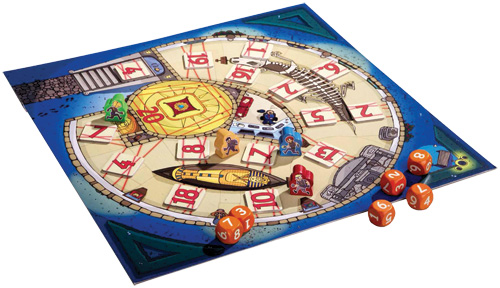
When the library profession gathers in Las Vegas this month for the American Library Association (ALA) Annual Conference (June 26 –July 1), how can we not focus on gaming in libraries? Play-based learning is an effective way to address the learning style changes of the Common Core and other emerging standards. This isn’t a long-shot idea.
The Common Core is really just a return to time-tested instructional strategies of the past: constructivism, inquiry, high-quality texts, authentic writing, and play-based learning. Scrape back the assessments and teacher evaluations, and the standards emerge as a reasonably laudable goal. It’s the fetishism for testing that leaves no time for extending learning in the library. The Common Core itself is very supportive of enrichment.
I often hear that teachers crave creativity but are overwhelmed by the standards and feel an enormous amount of pressure. I’m proposing a solution, which I will share during an ALA panel this month. I’ll be talking about how games align with the Common Core standards in English Language Arts and Math—and making the case for why games should be a part of every school library collection. We can provide a creative solution within the box of the current educational environment.
Common Core Math Practice standard two calls for students to reason abstractly and quantitatively. Proficient students, the standard explains, can both decontextualize—meaning, take a given situation, represent it symbolically, and manipulate the resulting symbols—and contextualize, i.e., pause during the manipulation process in order to probe into the referents for the symbols involved.
This is math-curriculum speak for saying that students need to be able to play with numbers. They must deeply understand how numbers and mathematical operations can be creatively combined to solve complex problems. There are a number of widely available games that directly teach—and, perhaps more importantly, assess—mastery of this ability.
One of the best is HABA Secret Code 13+4 (pictured above), in which players roll dice and apply their choice of any mathematical operation to a combination of dice in order to reach a target value. For example, having rolled a three and a two, I could multiply the two to reach a target of six. Or, I could add them together for a target of five. This 15-minute game directly addresses Common Core standards including Math Content OA.A.1, for math operations from second through fifth grade.
Use of the game library in my own school has sharply risen this year. I attribute the success to two factors. First, the inclusion of compelling games that are clearly aligned to standards and instruction. It is obvious that these are games to be incorporated as a part of teaching. Second, and probably more important, we catalog the games into our regional media library catalog. Teachers can discover them alongside the videos and book sets they are seeking.
In order to further evangelize for gaming in schools and libraries, I am starting a new venture. Play Play Learn reviews and aligns games with Common Core and instructional topics. To explore more ideas on gaming in libraries, consider joining the ALA Games and Gaming Round Table (GGRT) as part of your ALA membership. Hope to see you there this month.



Libraries are social entities that must provide the needed informational and technological needs to the clients gaming being one of the aspects.